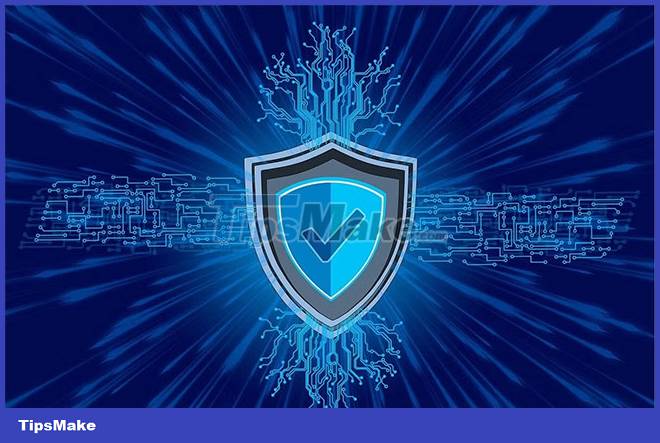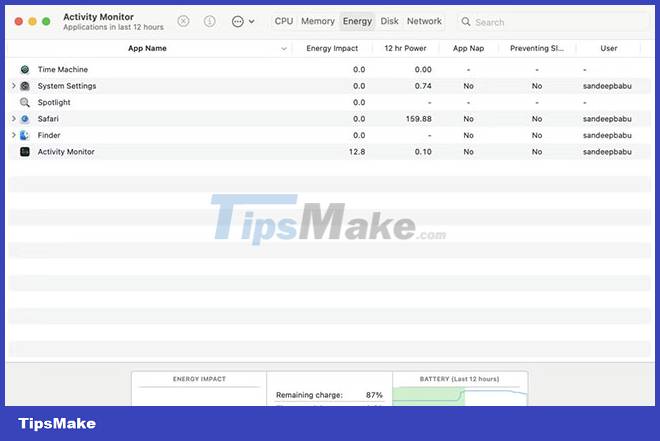How to prevent RAT attacks and take control of PC
So learn what a RAT attack is, why threat actors do these attacks, and how to prevent it.
What is Remote Access Trojan (RAT)?
Remote Access Trojan (RAT) is a type of malware that allows attackers to remotely control your computer.
With RAT, attackers can do whatever they want on your machine, including viewing and downloading files, taking screenshots, recording keystrokes, stealing passwords, and even sending commands to your computer. your computer to perform specific actions.
Since RATs give attackers almost complete control over infected machines, threat actors use them for malicious activities such as espionage, financial theft, and cybercrime.
Why do hackers perform RAT attacks?
An attacker can have full administrative control of the target computer with the help of a RAT program. As a result, an attacker can easily:
- Install or other malicious software programs on your computer.
- Read, download, delete, edit or implant data on your system.
- Control your webcam and microphone.
- Monitor your online activities by leveraging .
- Steal confidential information such as social security numbers, usernames, passwords, and credit card information.
- Take a screenshot of the remote computer screen.
- Maintains by installing RATs on multiple PCs and using those PCs to flood target servers with fake traffic.
Today, threat actors are also using RAT to mine cryptocurrencies. Since a remote access trojan program can disguise itself as a legitimate program, it can easily be installed on your computer without your knowledge.
How is the RAT installed on the PC?
So how does the RAT get installed on the PC? Like any other malware program, a remote access trojan can infiltrate your PC in many ways.
Remote access trojans may come with user-requested legitimate downloads from malicious websites, such as video games, software applications, images, torrent files, plug-ins , etc…
Manually created email attachments, phishing emails and web links on malicious websites can also send RAT bots to PCs.
Popular, long-standing remote access trojans include Back Orifice, Poison-Ivy, SubSeven, and Havex.
How to prevent RAT . attacks
Here are some proven ways that can protect you from RAT attacks.
1. Install an anti-malware program

While RATs can be difficult to detect and remove, one of the best ways to protect against them is to install an anti-malware program.
Anti-malware programs are designed to detect and remove malware, including RATs.
Installing an anti-malware program can help keep your computer safe from RATs and other malicious software.
Also, you should also make sure to keep your anti-malware program up to date as new threats are constantly emerging.
2. Enhanced access control
One of the most effective ways to prevent a RAT attack is to strengthen access control. This makes it harder for unauthorized users to access the network and systems.
For example, strong authentication measures, such as two-factor authentication and tighter firewall configurations, can help ensure that only authorized users have access to devices and data. Whether. Doing so will reduce the damage that RAT contamination can cause.
3. Exercising Minimum Privilege
When it comes to RAT prevention, one of the essential principles to follow is the principle of least privilege (POLP).
Simply put, this principle states that users should only have the minimum amount of traffic needed to perform their job duties. This includes both rights and privileges.
By strictly enforcing the principle of least privilege, organizations can significantly reduce the chances of RATs taking full control of a PC.
In addition, if the principle of least privilege is properly followed, there is a limit to what a RAT attacker can do to a PC.
4. Abnormal app behavior monitoring
RAT usually connects to a remote server to receive commands from an attacker. As a result, you may see unusual network activity when there is a RAT on your system.
So one way to help prevent RAT infection is to monitor the behavior of applications on the system.
For example, you may see applications connecting to unusual ports or IP addresses that are not normally used by the application. You may also find applications transferring large amounts of data, when they usually don't transfer that much data.
Tracking these types of unusual behavior can help you detect RATs before they can cause any damage.
Just open Task Manager on a Windows PC or Activity Monitor on a Mac to check if there are any applications running without your knowledge.

5. Use an intrusion detection system
You should continuously monitor your network traffic with the help of a reliable intrusion detection system (IDS).
The two main types of intrusion detection systems include:
- Host-based Intrusion Detection System (HIDS) installed on a particular device.
- Network-based Intrusion Detection System (NIDS) monitors network traffic in real time
Using both types of intrusion detection systems creates a security information and event management (SIEM) system that can block any software intrusion that bypasses firewalls and anti-malware programs. your toxic.
6. Update operating system, browser and other frequently used software
Threat actors often exploit vulnerabilities in outdated operating systems and software to gain access to victims' devices.
By keeping your operating system, web browser, and other commonly used programs up to date, you can help close any potential security holes that an attacker could use to infect your PC with RATs. .
You should also install any security updates for your antivirus and firewall software as soon as they become available.
7. Applying the Zero-Trust model
The Zero-Trust security model enforces strict identification and authentication for network access.
The principles of the Zero-Trust model include continuous monitoring and authentication, least privileges for users and devices, tight control over device access, and blocking of horizontal movement.
So, adopting the Zero-Trust model can help you prevent a RAT attack. This is because RAT attacks often use horizontal movement to infect other devices on the network and gain access to sensitive data.
8. Take a training course on cybersecurity
Suspicious links and malicious websites are the leading cause of malware distribution.
If you don't want to be a victim, never open email attachments. And you should always download software programs, images and video games from the original websites.
Additionally, you should regularly attend a cybersecurity training course to learn about the latest techniques for detecting malware threats.
Training employees on cybersecurity best practices to avoid Phishing and Social Engineering attacks can help an organization prevent RAT infections.
With malware, prevention is better than cure. Give security awareness training to individuals and organizations to prevent RAT attacks.
You should read it
- Smartphone was attacked by ZeuS Trojan virus
- Trojans stealing self-destruct appear
- Appeared trojan trojan antivirus tool for mobile
- What is Trojan Dropper?
- McAfee spoofing spam to distribute trojans
- Trojan forged Microsoft security warnings
- There are many malicious code targeting eBay
- 5 mobile security risks you need to avoid
May be interested
- The 4 most popular network attacks towards older people in 2018
 a statistic has shown that in recent years, cyber attacks tend to focus more on older users.
a statistic has shown that in recent years, cyber attacks tend to focus more on older users. - Apple is hiring special forces to prevent information leakage?
 apple has salted its face when unpublished products were exposed on the internet out of control like images and information from various sources.
apple has salted its face when unpublished products were exposed on the internet out of control like images and information from various sources. - DNS attacks are costing governments worldwide huge amounts
 government organizations in each country suffer an average of 12 dns attacks per year.
government organizations in each country suffer an average of 12 dns attacks per year. - What is Ping of death? How to detect and prevent attacks
 ping of death is a form of denial of service (dos) attack in which an attacker sends large or abnormally fragmented icmp (internet control message protocol) packets to a target computer or service.
ping of death is a form of denial of service (dos) attack in which an attacker sends large or abnormally fragmented icmp (internet control message protocol) packets to a target computer or service. - How to handle and escape when the dog attacks
 what to do when a dog attacks? this is a difficult answer because when a dog attacks, most people are in a state of panic and cannot control themselves, leading to a bad situation.
what to do when a dog attacks? this is a difficult answer because when a dog attacks, most people are in a state of panic and cannot control themselves, leading to a bad situation. - How to prevent common summer pests from entering your home
 plan ahead for summer pest control so you can prevent insects from becoming a nuisance.
plan ahead for summer pest control so you can prevent insects from becoming a nuisance. - How to Turn Off User Account Control (UAC) Notifications
 user account control (uac) is a microsoft windows feature that helps prevent users from making unauthorized changes that would otherwise require permission from administrators. you can manage your computer's uac notification settings at...
user account control (uac) is a microsoft windows feature that helps prevent users from making unauthorized changes that would otherwise require permission from administrators. you can manage your computer's uac notification settings at... - Prevent attacks to steal your information
 never reveal confidential information to people unless you are sure that they are entitled to request and have access to that information.
never reveal confidential information to people unless you are sure that they are entitled to request and have access to that information. - How to Enable Control‐Alt‐Delete on Logon
 control-alt-delete (the secure attention sequence) has been well-known for invoking security options and task manager. control-alt-delete also has historically been used for sign-in to prevent spoofing issues. here is how to enable...
control-alt-delete (the secure attention sequence) has been well-known for invoking security options and task manager. control-alt-delete also has historically been used for sign-in to prevent spoofing issues. here is how to enable... - Microsoft warns of an increasing trend of attacks targeting firmware and worrying public indifference
 this is indeed a worrying 'lethargy', especially given the recent increase in the number of attacks targeting system software.
this is indeed a worrying 'lethargy', especially given the recent increase in the number of attacks targeting system software.










 Norton or Bitdefender is the better PC protection solution?
Norton or Bitdefender is the better PC protection solution? What is BlackCat Ransomware? How to prevent?
What is BlackCat Ransomware? How to prevent? What is Malware HackTool:Win32/Keygen? How to remove?
What is Malware HackTool:Win32/Keygen? How to remove? Why shouldn't there be more than one antivirus on a Windows PC?
Why shouldn't there be more than one antivirus on a Windows PC? Distinguish viruses, trojans, worms and rootkits
Distinguish viruses, trojans, worms and rootkits The 4 most common ways to spread malware today
The 4 most common ways to spread malware today